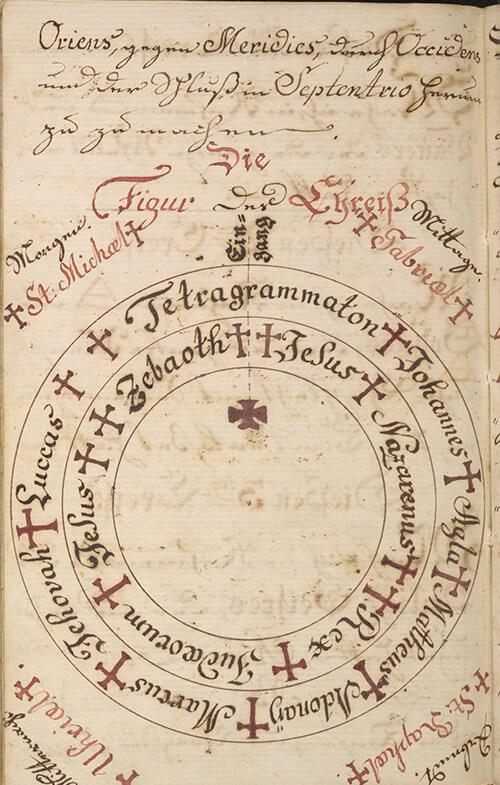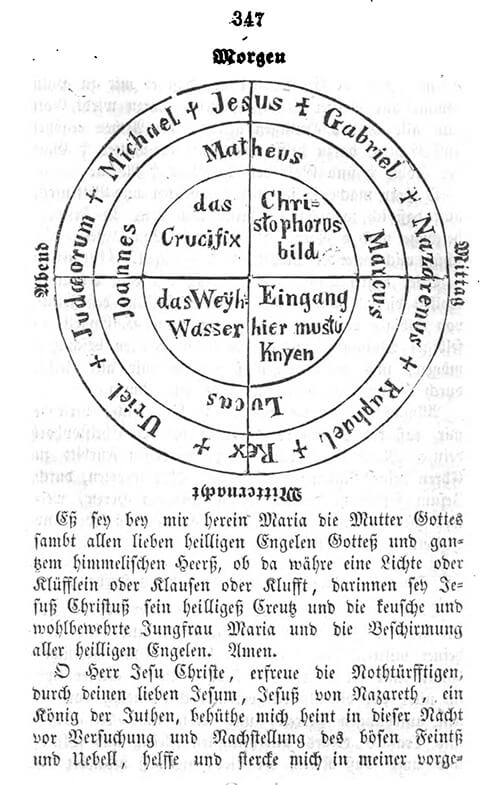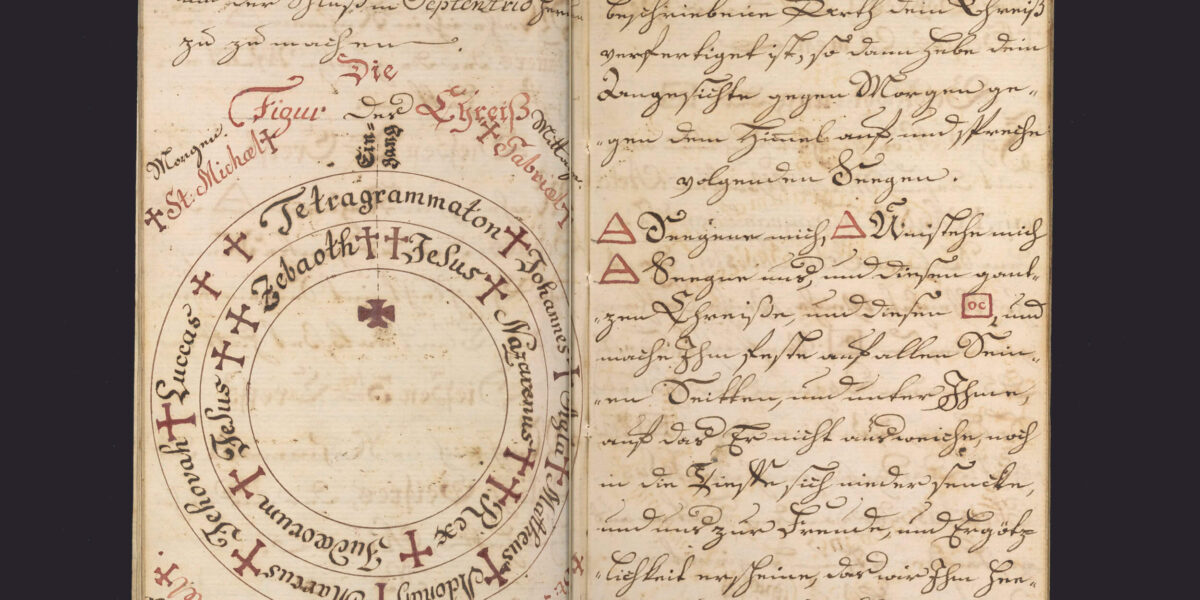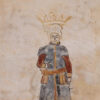Treasure Hunting manuscript from 18th Century Germany attributed to Zypriani
University of Pennsylvania Ms. Codex 1679: Heptameron des Ludowici Zypriani, de Mongold Arcanum Secretum, die Schaetze zu heben is representative of an entire genre of grimoires used for treasure hunting popular in eighteenth century Germany, Austria, and parts of neighboring Switzerland. Many of the texts were attributed to saints such St Corona, St Christopher, St Gertrude, and with the present text, St Cyprian (Zypriani) of Antioch. Treasure seeking was a capital crime in many German Catholic states as late as 1776 which made this brand of magic particularly high risk. Treasure seekers went to great effort and expense to procure copies of manuscripts like this. Although they share a common title, the text is not the same as Pietro d’Abano’s Heptameron. The text contains instructions for conjuring angels for the seven days of the week which is most likely where it gets its title. The word, Heptameron, means literally, “seven days” from the Greek ηπτα— “seven” and ημερα — “day”).
Much like the Gertruden Booklets and St Christopher Prayer, the text contains intercessory prayers though the saints to compel spirits to “raise treasure from under the earth.” It contains conjurations for demons such as Lucifer, Beelzubub, Mefistofiles, Belfagor, Baal, Mustaphor, Astrapon, and Aschmodi. The manuscript is split into 2 books, each with its own title page. In addition to being heavily laden in prayers and invocations, it includes tables for the incenses, auspicious days, planetary signs, Sigils to bind terrestrial spirits, and other figures including the Grand Pentacle of Solomon. Below is a table showing the specifics for Prayers to the 4 Evangelists. Although the directions don’t entirely align with the text, they are also specified in the ‘Circulus.’ This content is found in the St Christopher Prayer that Johann Scheible published in volume III of his Das Kloster, 1846. View PDF (page 343)
Table from Text + Angels from Circulus
| Evangelist | Direction | Time | Angel |
|---|---|---|---|
| St Luccas | Septentrio (North) | Mitternacht (Midnight) | Uhrial |
| St Jonhannes | Oriens (East) | Morgen (Morning) | St Michael |
| St Matheus | Meridio (South) | Mittagen (Noon) | Gabriel |
| St Marcus | Occidens (West) | Abend (Evening) | St Raphael |
Circulus Comparison

Manuscript Codex 1679 
St Christopher Prayer (Scheible)
For comparison, Sammlung der grössten Geheimnisse ausserordentlicher Menschen in alter Zeit. is one of best collections of Treasure hunting grimoires. It was published under the fictions imprint, Peter Hammer, 1725 (ca. 1857?)
Catalog Notes: Ms. codex. Title from title page (f. 1r). Foliation: Paper, 50; [1-50]; modern foliation in pencil, upper right recto. Layout: Written in 15-17 long lines. Script: Written in a cursive script by a single hand. Decoration: Several diagrams and tables (f. 6v, 20r, 27r, 28v, ); alchemical symbols in red ink throughout. Binding: Contemporary marbled paper wrapper. Origin: Written in Germany in the second half of the 18th century.
Providence: Formerly owned by Charles Rainsford (British army officer, fellow of the Royal Society, and alchemist); bequeathed by Rainsford to Hugh Percy, Second Duke of Northumberland.Owned by the 2nd through 12th Dukes of Northumberland, ms. 590, Alnwick Castle, Northumberland, 1809-2014.Sold at auction at Sotheby’s (London), 15 July 2014, as part of Lot 411.
References: Own Davies, ‘Grimoires: A history of Magic Books’ (New York, 2009), 120
Kislak Center for Special Collections, Rare Books and Manuscripts University of Pennsylvania Permanent Link: http://hdl.library.upenn.edu/1017/d/medren/9962935953503681




